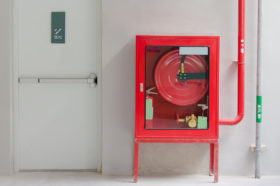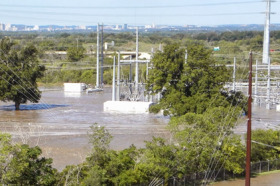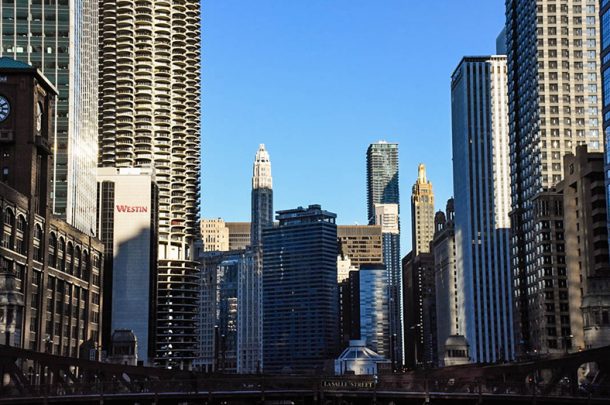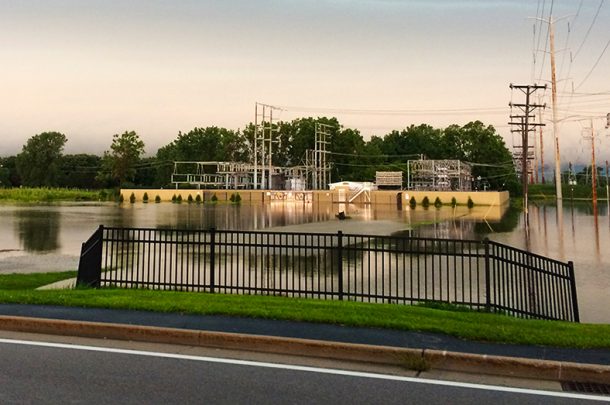
It’s been more than a year since Hurricanes Harvey, Irma, and Maria caused catastrophic damage in the Southeastern United States, with some reports estimating over $280 billion dollars’ worth of damage and 3,300 deaths across the region. 2017 was undoubtedly considered one of the most active tropical storm seasons on record with two Category 5 hurricanes making landfall1. Unfortunately, 2017 was not an isolated blip in weather incidents, as in 2018 we saw not only the earliest formation of a hurricane in the “season,” but also the third-most intense hurricane on record to make landfall2.
While these storms themselves are both devastating and alarming, they are not the only natural disasters that design professionals should keep at the forefront when creating design solutions for clients. Many times, the flooding that comes after these significant storms causes more damage than the storms themselves, such as the case with Hurricanes Katrina and Harvey, and Super Storm Sandy. Before any of these unforeseen events even develop, we as design professionals have the power to help mitigate property damage, protect the public, and allow for a quick return to normal living conditions.
In order to discuss designing to minimize or eliminate the negative effects of these events, we need to first define and understand what resilient design means. According to the Resilient Design Institute, “Resilience is the capacity to adapt to changing conditions and to maintain or regain functionality and vitality in the face of stress or disturbance. It is the capacity to bounce back after a disturbance or interruption. Resilient design is the intentional design of buildings, landscapes, communities, and regions in response to these vulnerabilities3.” In other words, resilient design is how we proactively respond, how our community responds and how the region responds to significant events such as natural disasters, power loss, or other major emergencies that interrupt our daily lives.
While design professionals in the Midwest may not be directly impacted by hurricanes, the area is no stranger to other severe weather events such as flooding, wind storms and tornadoes, whose consequences are just as serious. There’s also a need to guard against man-made disasters such as fires or terror attacks. While we cannot always stop these events from occurring, there are some specific steps that designers can take to minimize the effects that these catastrophes have on the built environment:
- Locate your project outside of known hazard areas – first and foremost, designers should advocate for project sites outside of flood-prone areas so that design efforts and construction dollars can be focused on maximizing operational efficiency. If you are working on a renovation project which is already located in a high-hazard area, then design a protection/mitigation system that will allow for continued use of the facility. An example that Primera recently completed allowed for the protection of an existing substation and future expansion area with the addition of a floodwall able to withstand the 100-year flood. This not only created a more resilient electric source for the community, but also minimized flooding of adjacent residences and improved water quality through the creation of wetlands as part of the design solution.
- Design with flexibility in mind – in other words, don’t design to code minimum and don’t rely solely on past weather data when sizing equipment. Consider potential extreme weather events as you design and make sure to factor in climate change when determining locations of critical facilities and systems. As you design, however, maintain flexibility in operations – smaller units in series, or with space for future growth may best accommodate current and future needs.
- Create robust and simple systems – While many designers think that complex systems are required to maximize energy efficiency, simpler systems can also provide energy efficient solutions. Providing the most robust systems available allows for long-term efficiency. Coupling this with manual controls wherever possible can also accommodate periods when electrical infrastructure is not available. If manual controls are incorporated into the initial design, then operations manuals and training during the commissioning phase can include this crucial piece of knowledge for emergency operations.
- Provide redundancy where possible – During severe weather events, having backup systems with alternate power sources can be useful in providing short-term solutions. In addition to providing fuel oil generators as a common engineering practice for electrical power redundancy, battery storage has also become popular in recent years. With the recent passage of the FEJA bill (Future Energy Jobs Act), solar power incentives will be available and accessible to residential customers in Illinois. Utilizing solar power with battery storage – and allowing for flexible-sized mechanical systems that fully utilize the renewable “free” energy is another way to provide redundancy for your primary fuel source.
- Use passive design strategies – Passive design strategies use natural energy sources instead of purchased energy like electricity or natural gas. These include daylighting, natural ventilation, and solar energy. The use of these sustainable design elements has become more common in the last few years as LEED design principles are more popular. Some of these strategies minimize dependence on HVAC for heating and cooling, such as using rain screens (which can also capture rainwater), using solar energy for hot water heating, incorporating micro wind turbines as part of the project’s electrical needs, or using solar thermal walls for preheating water in closed loop HVAC systems.
- Use vernacular design features – These features allow for survivability without air conditioning or heating when the electrical grid is disrupted for short periods of time. Some of these elements are considered “old-fashioned,” but work just as well. Examples include wrap-around porches in the South to keep solar heat gain away from windows, or planted evergreens as wind screens in the North, Midwest and Plains states to shelter homes from prevailing winds to minimize heating requirements.
- Use natural resources where possible to minimize your dependence on traditional sources. This can include designing on-site rainwater storage for irrigation or grey water systems or designing vegetated roofs and rainwater bioswales to reduce the urban heat island effect and better manage stormwater. Primera has utilized innovative stormwater and rainwater solutions on past projects, including the use of rainwater for grey water systems at a lakefront comfort station, and utilizing a partially demolished structure as a storage vessel for stormwater, which eliminated additional demolition costs or the purchase of new storage tanks.
- Fight for master transportation plans that minimize dependence on fuel-driven vehicles and instead, opt for pedestrian-focused transportation services. They allow for greater walkability and connectivity. As roadway infrastructure is rebuilt, make sure that adequate pedestrian access and protected bike lanes are built into the plans – or that at least the space required for these improvements is allocated and protected.
- Design and build (or rebuild) physical infrastructure to handle increased stormwater flows – Infrastructure such as culverts, storm sewers, roadways, or bridges can relieve some of the stress of additional rainfall. Keep in mind that code minimum or standards don’t allow for future flexibility and the new normal in severe weather because they solely rely on past data. We need to start designing for that.
- Create community facilities that serve as resilience hubs– As new community-centered facilities are designed, such as high schools, community centers, senior centers, and village halls, designers should provide the necessary infrastructure to allow them to be converted into emergency shelters in the event of severe weather or other disasters. Design systems which have redundancy, back-up through fuel oil generators or battery storage, and robust infrastructure which can handle the additional capacity for these short-term events.
While there are several more strategies that can be incorporated into your designs, what’s most important is to build upon each item incrementally and to incorporate as many strategies as possible on your next project. The added savings will not only pay for these elements themselves but will also have a positive impact on the buildings and community at large. For additional information or for help on your next resilient design project, please contact Lourdes Gonzalez.
References






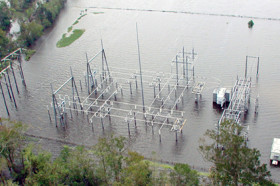
 Flood Risk Mitigation in the Utility Sector
Flood Risk Mitigation in the Utility Sector 
